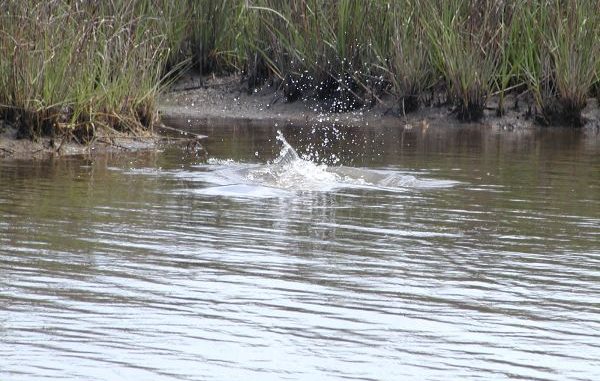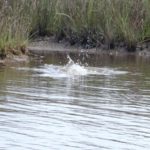
Time and tide wait for no flyrodder
In February, the Wyoming state legislature considered an amendment to a bill requiring that state to purchase an aircraft carrier. Even though it failed, there were 22 legislators who voted for the amendment.
It would’ve been the ultimate waste of taxpayer dollars — Wyoming has no ports or even large lakes. Or enemies. Unless perhaps they needed quick-strike capability to counteract invasive herds of antelopes.
I can see it now — an aircraft carrier sitting in the Green River, with almost all of its hull sticking out of the water. It would’ve made an impressive sight.
Somehow that vision painfully reminds me of a trip many years ago to one of my favorite redfish holes near Chauvin.
I had brought two guests from Texas to an area of shallow ponds to hunt fish on the low tide. We arrived about 8 a.m. and found reds backing, and drum and sheepshead tailing in inches of water.
It was phenomenal sight casting; for two hours we spotted fish after fish, and teased them with flies. There were many follows and strikes, and occasionally, an eat.
In all the excitement, we failed to realize that the tide was continuing to fall, even past the period where low tide had been predicted. The culprit was a gentle north wind that continued to push marsh water out to sea.
The other problem was the boat. My bay skiff isn’t exactly a flats boat. Before we knew it, there was probably an inch or 2 of water under our hull.
We sat there for a couple hours until there was just enough water for me to push-pole our way to deeper water.
Of all the tidal conditions, I find the low tides most productive for the Spottail Elvis. It’s the reason why, like many fly anglers, most of my coastal marsh fishing these days is done from canoe or kayak.
Low-tide anglers also need flies that can remain in the fish’s strike zone momentarily without grabbing the bottom. Patterns that ride hook up — such as Bendbacks, Crystal Shrimp, Marsh Minnow — or that are weightless, such as spoon flies, are favored.
On the falling tide, bait such as small fish, crabs and shrimp are forced to evacuate the protected grasses, submerged islands and trenasses. Reds gather at the choke points, where they enjoy an all-you-can-eat buffet.
Baitcasters may like a falling tide, but flyrodders have mixed feelings. Flies are competing against a lot of bait, and most often the choke points are better suited to blind casting.
Under this condition, tossing weighted flies into these choke points and stripping them across the current can be productive.
A rising tide is a decent one for fishing ponds, as it brings bait and reds into the skinny-water areas. But the period of productivity is usually very short. For some reason, reds are very tough to catch on the flood tides.
Still, when fishing from a shallow-draft boat or a stand-up kayak, I do enjoy the high tides. The reds are a little less spooky and are more easily sighted if the water is clear.
There’s one other tidal condition that fly anglers have come to know and like. It’s the basis for Cormier’s 8th Law of Fly Fishing: “Slack tide favors the flyrodder.”
A sluggish tide can last for several days. During the last day or two, just as the tidal movement is starting to rev up, you can find very active redfish. Perhaps they sense a feeding period about to start. Perhaps they’re hungry. But they’re moving around, looking for food.
Because there has been a lull in tidal flow, water in the ponds has had a chance to settle out and clear up. I’ve often found the clearest water, especially in the summer months, during slack-tide periods.
You have the two ingredients to a flycaster’s recipe for marsh success: clear water and moving fish.
At this time, I love to fish flies that make noise or push water. There’s nothing quite like casting a Perch Float Popper, giving it a couple of good strips, pausing and watching a poisson rouge rush in from several feet away. They’ll sit right behind the popper, and if you keep it moving they’ll slurp it down.
Not as exciting, but more violent in nature, is when a large fly such as a Seaducer, Redchaser, LaFleur’s Charlie or Borger Crab pushes water with each strip and the red strikes at full speed. It’s times like these you’d better have your leaders in good shape and the knots tied properly.
Wind can have a great impact on tides. For example, a day or two after a cold front, a high tide may be actually be lower than the low tide following several days of strong southerly winds.
Fly anglers should also consider time of day as important as tide.
In summer, first light to early morning is always a good period. The cool water temperature of the early day brings more activity. The best days — or locations — will be those where the low tide comes around late morning so two prime periods run consecutively.
Now that the peak redfish season is upon us, clean those fly lines and reels, and get in some casting practice. There’s fish to be caught.




